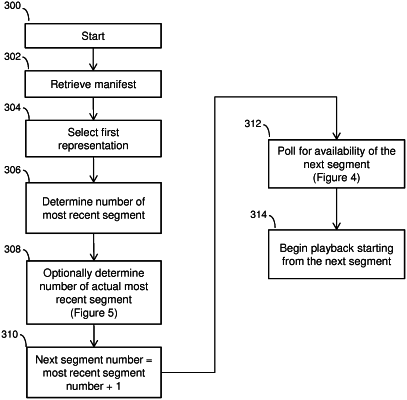| CPC H04L 65/65 (2022.05) [H04L 65/612 (2022.05); H04N 21/2187 (2013.01); H04N 21/26258 (2013.01); H04N 21/26283 (2013.01); H04N 21/472 (2013.01); H04N 21/6587 (2013.01); H04N 21/8456 (2013.01)] | 12 Claims |

|
1. A method of streaming a media sequence by a client from a server, wherein said media sequence comprises a sequence of encoded segments and said media sequence is progressively made available at the server, said method comprising:
determining a most recent encoded segment made available at the server;
identifying a next encoded segment to be made available at the server as the encoded segment in the sequence after the most recent encoded segment;
repeatedly making requests to the server for the next encoded segment until an acknowledgement is received that the next encoded segment is available;
receiving an acknowledgement that the next encoded segment is available; and
starting streaming of the media sequence from the next encoded segment instead of from the most recent encoded segment.
|